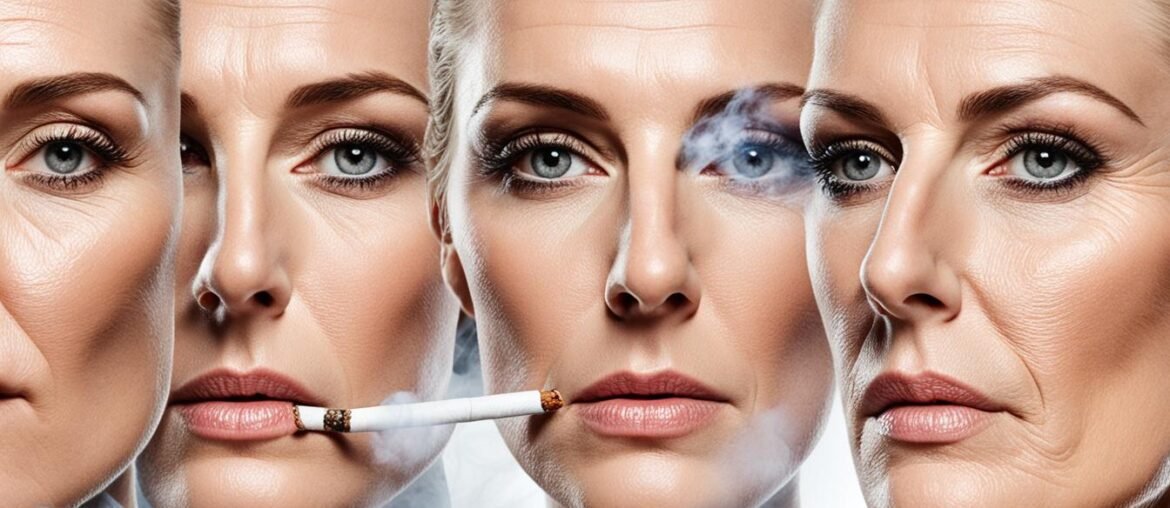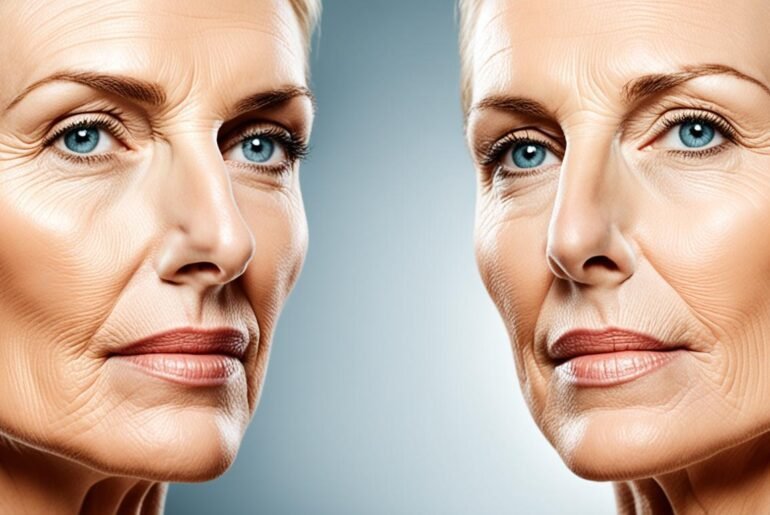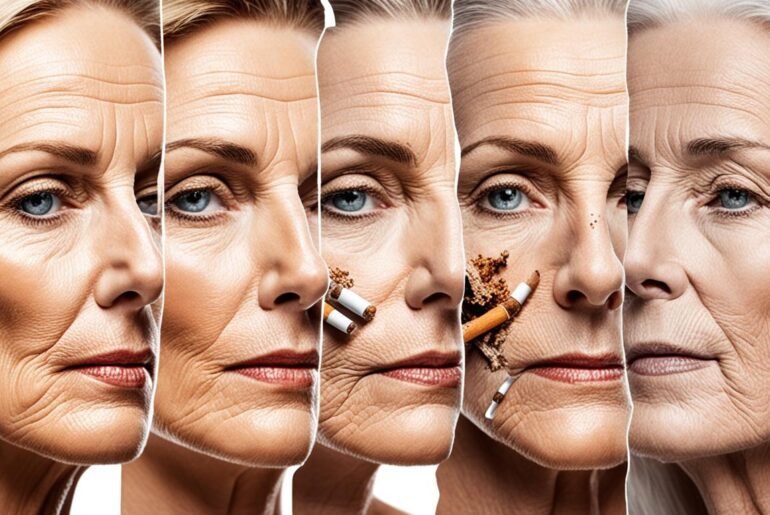Did you know that smoking can have a devastating impact on your skin? It’s not just a matter of a few wrinkles here and there. Smoking can cause significant damage and accelerate the aging process, leaving you with dull, dry skin, lines, wrinkles, sagging, and even skin cancer. The effects of smoking on the skin are far-reaching and can be alarming.
Key Takeaways:
- Smoking can lead to skin damage, premature aging, and various skin conditions.
- Nicotine in cigarettes constricts blood vessels, resulting in dull, dry skin.
- Chemicals in cigarettes break down collagen and elastin, leading to lines, wrinkles, and sagging skin.
- Smokers are more susceptible to developing “age” spots caused by sun damage.
- Quitting smoking and adopting a healthy lifestyle can help reverse the damage and improve skin health.
How Cigarettes Affect Your Skin
Smoking can have a profound impact on your skin, causing visible changes that differentiate smokers from non-smokers. These changes include the appearance of more lines, wrinkles, undereye bags, and sagging skin.
The nicotine found in cigarettes plays a significant role in these skin alterations. Nicotine constricts blood vessels, which disrupts normal healing and cell renewal processes. As a result, smokers often experience dull and dry skin.
Furthermore, the chemicals present in cigarettes break down collagen and elastin at an accelerated rate. Collagen and elastin are essential components of the skin that provide structure and elasticity. The degradation of these proteins leads to the formation of lines, wrinkles, and thin, sagging skin.
Additionally, smokers are more prone to developing “age” spots caused by sun damage. These spots, also known as solar lentigines, are darkened patches of skin that can appear more frequently and prominently in smokers.
| Effects of Smoking on the Skin | |
|---|---|
| Nicotine constricts blood vessels, leading to dull and dry skin. | |
| Chemicals in cigarettes break down collagen and elastin, resulting in lines, wrinkles, and sagging skin. | |
| Smokers are more prone to developing “age” spots caused by sun damage. |
Reversing Cigarette Skin Damage
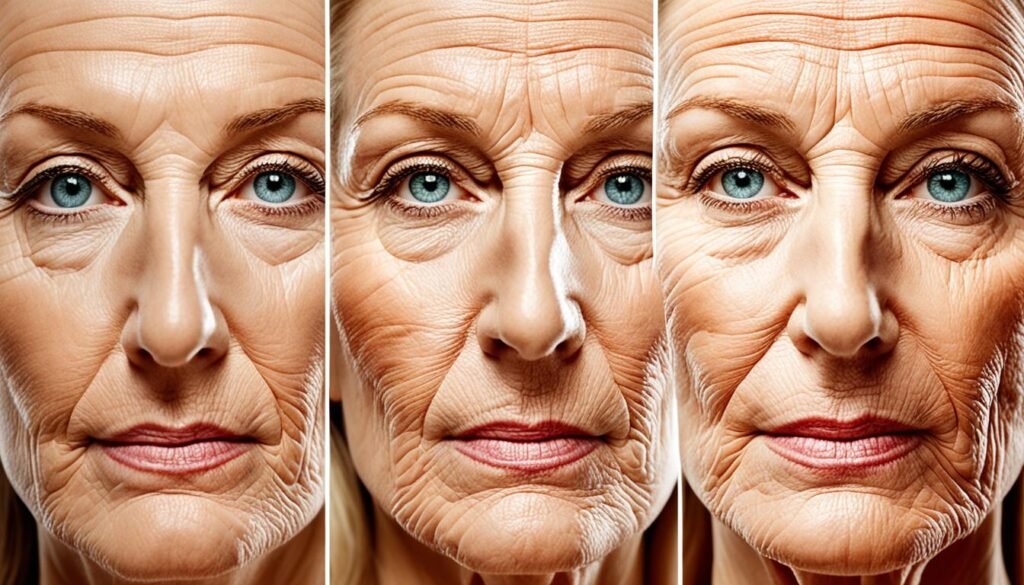
The first step to reversing cigarette skin damage is quitting smoking. By eliminating nicotine and other harmful chemicals from your body, you allow your skin to begin the healing process. Quitting smoking not only benefits your overall health but also has a significant impact on your skin’s appearance and vitality.
While quitting smoking is crucial, adopting healthy habits is equally important for skin recovery. Start by incorporating a balanced and nutritious diet rich in fruits, vegetables, and antioxidants. These foods help provide essential nutrients that promote skin repair and regeneration. Additionally, regular physical exercise improves blood circulation and oxygen flow to the skin, aiding in its rejuvenation.
Hydration is key to maintaining healthy skin and supporting the recovery process. Drink ample amounts of water to keep your skin well-hydrated, promoting elasticity and reducing dryness. This simple yet effective habit can make a significant difference in the overall health and appearance of your skin.
Supplementing your diet with vitamins known for their skin repair properties can further boost the recovery process. Consult with a doctor or dermatologist to determine which vitamins are best suited for your individual needs. Some vitamins that are commonly recommended for skin repair include:
| Vitamin | Benefits for Skin | Sources |
|---|---|---|
| Vitamin C | Boosts collagen production, reduces wrinkles | Citrus fruits, strawberries, bell peppers |
| Vitamin E | Provides antioxidant protection, moisturizes skin | Almonds, spinach, sunflower seeds |
| Vitamin A | Supports cell turnover, improves skin tone | Carrots, sweet potatoes, leafy greens |
| Vitamin D | Regulates cell growth and repair | Fatty fish, fortified dairy products, sunlight |
| Biotin | Strengthens nails and hair, promotes healthy skin | Eggs, nuts, whole grains |
By quitting smoking, adopting healthy habits, and incorporating skin-repairing vitamins into your routine, you can effectively reverse cigarette skin damage and enhance the health and appearance of your skin. Remember, consistency and patience are key when it comes to allowing your skin to recover and thrive.
Starting a Skincare Regimen
Now that you have quit smoking, it is crucial to establish a regular skincare routine to help in the recovery process. Quitting smoking can make the skin sensitive, so it’s important to use gentle products that won’t further irritate the skin.
A skincare regimen after quitting smoking should include cleansing, exfoliating, and moisturizing to promote skin renewal and rejuvenation. These steps will help remove impurities, dead skin cells, and replenish lost moisture to achieve a healthier complexion.
When choosing skincare products, look for antioxidant formulations that contain ingredients such as alpha-hydroxy acids or retinols. Antioxidants help neutralize free radicals and protect the skin from damage caused by smoking. These ingredients can also improve skin texture, minimize the appearance of fine lines and wrinkles, and promote a more youthful appearance.
Here’s a simple skincare routine to follow:
- Cleansing: Use a gentle cleanser to remove impurities, environmental pollutants, and residual toxins from the skin. Massage the cleanser onto damp skin and rinse thoroughly with lukewarm water.
- Exfoliating: Exfoliation helps slough off dead skin cells and unclog pores. Choose a mild exfoliator that suits your skin type and gently scrub your face in circular motions. Rinse off with water and pat your skin dry.
- Moisturizing: Apply a hydrating moisturizer to nourish and protect your skin. Look for a moisturizer that is non-comedogenic and specifically designed for sensitive skin to avoid any potential irritations.
Remember, consistency is key when establishing a skincare routine. Stick to this regimen twice a day, in the morning and evening, to achieve optimal results. Additionally, don’t forget to apply sunscreen with at least SPF 30 before heading out during the day to protect your newly rejuvenated skin from harmful UV rays.
Starting a skincare regimen after quitting smoking can significantly contribute to the recovery of your skin’s health and appearance. Give your skin the care it deserves, and enjoy the benefits of a refreshed and revitalized complexion.
Professional Skin Rejuvenation Treatments
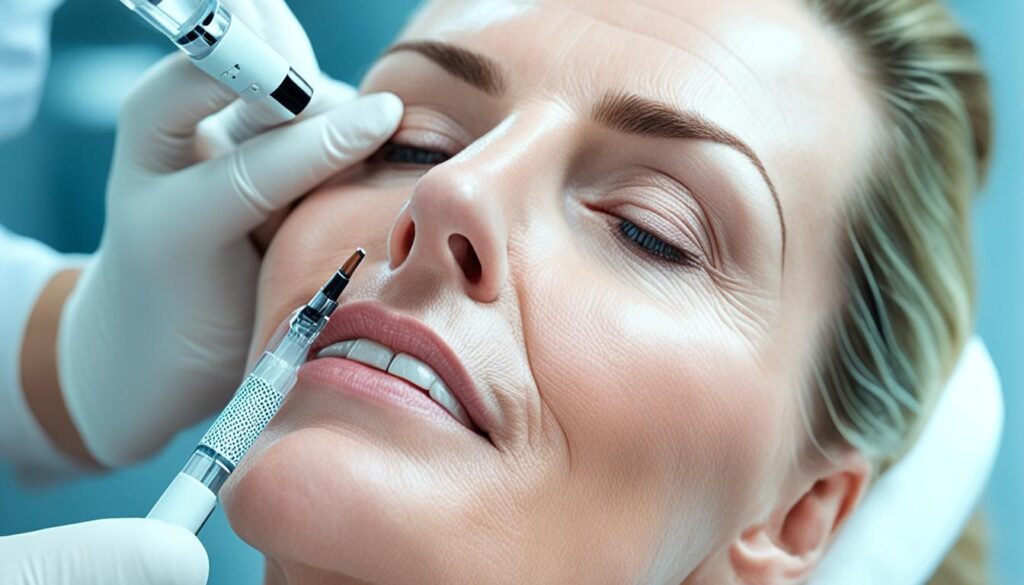
When it comes to reversing cigarette skin damage, professional skin rejuvenation treatments can provide targeted and effective results. These treatments go beyond traditional skincare routines and offer advanced techniques to repair and rejuvenate the skin.
One popular option is laser skin resurfacing, which involves removing the top layer of damaged skin using laser technology. By doing so, it stimulates the growth of healthier skin cells, resulting in a smoother and more youthful complexion.
Chemical peels are another effective treatment for rejuvenating the skin. They work by exfoliating the outer layer of the skin, revealing a softer and more hydrated appearance. Chemical peels can also help address skin concerns such as pigmentation issues and fine lines.
BroadBand Light (BBL) treatments are an excellent choice for targeting spider veins and improving overall complexion. This non-invasive procedure uses intense pulsed light to stimulate collagen production, helping to reduce redness, sunspots, and other skin imperfections.
For deeper wrinkles and loss of volume, fillers and wrinkle injections can be highly beneficial. These treatments involve the injection of hyaluronic acid or other fillers directly into the skin to restore volume and smooth out wrinkles.
Overall, professional skin rejuvenation treatments offer a range of solutions to reverse cigarette skin damage and improve skin health. The choice of treatment will depend on individual needs and goals, and it is best to consult with a trusted plastic surgeon to determine the most suitable options.
Choosing the Right Treatment
When it comes to reversing cigarette skin damage, choosing the right treatment is crucial for achieving optimal results. Consulting a plastic surgeon is highly recommended as they are experts in addressing skin concerns. During a consultation, the plastic surgeon will assess the individual’s needs and goals, creating a customized treatment plan tailored to their specific skin condition.
The plastic surgeon’s expertise and knowledge of various treatment options enable them to recommend the most suitable approach for reversing cigarette skin damage. Whether it’s laser skin resurfacing, chemical peels, or wrinkle injections, the plastic surgeon will determine the best treatment or combination thereof to achieve the desired outcome.
Customizing treatment plans is essential because each individual’s skin condition and concerns are unique. Factors such as skin type, severity of damage, and personal preferences play a role in determining the right treatment. By customizing the treatment plan, the plastic surgeon can target specific areas of concern and address individual needs effectively.
Skin Absorption of Nicotine
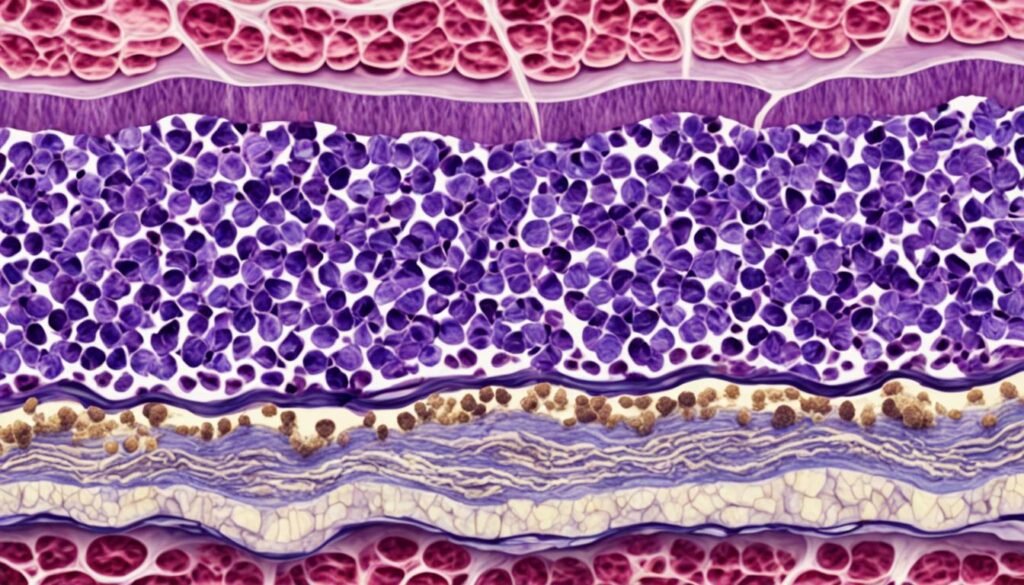
The detrimental effects of smoking on skin health extend beyond external damage. The skin is capable of absorbing nicotine from cigarettes, leading to various adverse effects. Nicotine, a well-known addictive substance, can wreak havoc on the skin’s appearance and integrity.
One of the adverse effects of nicotine on the skin is premature aging. Nicotine constricts blood vessels, leading to reduced blood flow and oxygen supply to the skin. This decreased circulation results in dull, dry, and lackluster skin, contributing to the appearance of fine lines, wrinkles, and sagging.
Moreover, nicotine can delay wound healing, jeopardizing the skin’s ability to repair itself. Studies have shown that nicotine interferes with crucial stages of the wound healing process, impairing collagen synthesis and cell proliferation.
Increased susceptibility to infections is another consequence of nicotine absorption through the skin. Nicotine weakens the immune response, making the skin more vulnerable to bacterial and fungal infections. This weakened defense mechanism can contribute to an increased risk of skin infections, impairing the overall health and appearance of the skin.
Nicotine also plays a role in the development and exacerbation of various skin diseases. Conditions such as psoriasis, acne, eczema, and even skin cancer can be triggered or worsened by nicotine. These conditions can significantly impact an individual’s quality of life, causing discomfort and affecting self-esteem.
Understanding the adverse effects of nicotine on the skin is vital in promoting skin health and overall well-being.
“The skin’s ability to absorb nicotine from cigarettes can lead to premature aging, delayed wound healing, increased susceptibility to infections, and the development or exacerbation of various skin diseases.” – [Your Full Name]
Adverse Effects of Nicotine on the Skin
| Effect | Description |
|---|---|
| Premature aging | Nicotine constricts blood vessels, leading to dull, dry skin, and the formation of lines, wrinkles, and sagging. |
| Delayed wound healing | Nicotine interferes with collagen synthesis and cell proliferation, impairing the skin’s ability to repair itself. |
| Increased risk of infections | Nicotine weakens the immune response, making the skin more susceptible to bacterial and fungal infections. |
| Skin diseases | Nicotine can trigger or worsen conditions such as psoriasis, acne, eczema, and even skin cancer. |
By gaining awareness of the adverse effects of nicotine on the skin, individuals can make informed decisions about their smoking habits and take necessary steps towards promoting healthier skin.
Smoking and Skin Cancer
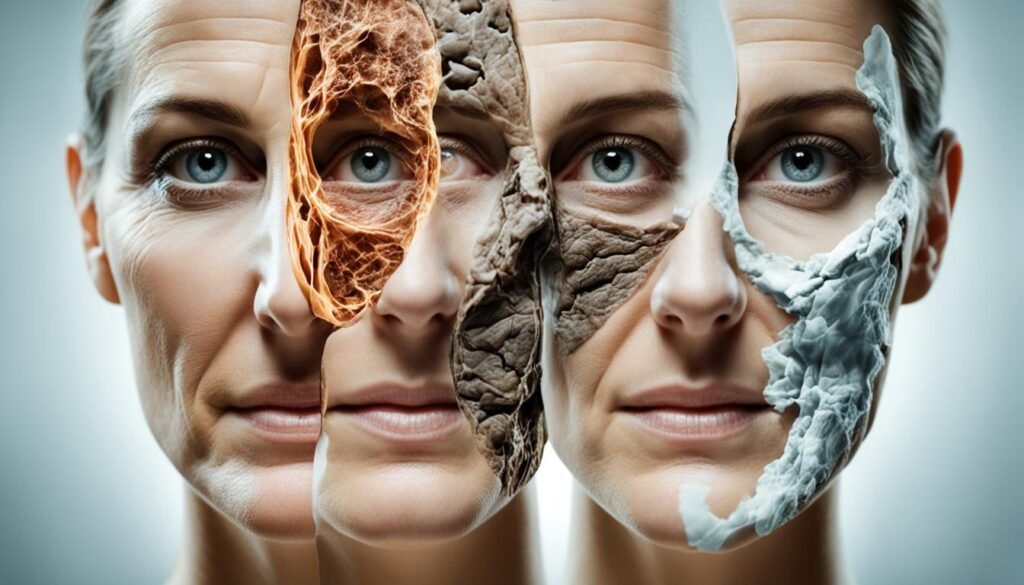
Smoking is not only detrimental to overall health, but it also poses a significant risk to the skin, including an increased likelihood of developing skin cancer. In particular, smokers have a higher risk of developing squamous cell carcinoma, one of the most prevalent forms of skin cancer.
Research has shown that smokers with melanoma, a type of skin cancer that can be particularly aggressive, have a lower survival rate compared to nonsmokers. This suggests that smoking may negatively impact the prognosis and outcomes for individuals fighting this life-threatening disease.
However, there is hope. Quitting smoking can play a crucial role in reducing the risk of skin cancer and improving survival rates for patients with melanoma. By quitting smoking, individuals can take an active step towards protecting their skin and enhancing their overall health.
It is important to remember that quitting smoking can be challenging, but the benefits are worth it. Not only does quitting smoking reduce the risk of developing skin cancer, but it also improves overall health and well-being. Seeking support from healthcare professionals, friends, and family can make the journey to becoming smoke-free a little easier.
| Increased Risk of Skin Cancer | Poorer Survival in Smokers with Melanoma | |
|---|---|---|
| Impact | Smokers have an increased risk of developing squamous cell carcinoma. | Smokers with melanoma experience lower survival rates compared to nonsmokers. |
| Recommendation | Quitting smoking can help minimize the risk of developing skin cancer. | Quitting smoking can improve outcomes and increase survival rates for melanoma patients. |
Quitting Smoking and Improving Skin Health
When it comes to improving skin health, quitting smoking can have significant benefits. The harmful chemicals in cigarettes not only damage the internal organs but also have a detrimental effect on the skin. By quitting smoking, individuals can experience improvements in skin tone and pigmentation, as well as a reduction in wrinkles and sagging skin.
One of the noticeable changes after quitting smoking is an improvement in skin tone. Smoking can cause the skin to appear dull and sallow due to the constriction of blood vessels caused by nicotine. By quitting smoking, the skin receives better blood flow, resulting in a healthier and more vibrant complexion. Within a few weeks of quitting, changes in skin color due to smoking can start to reverse.
Additionally, quitting smoking can lead to improvements in pigmentation. Smoking can contribute to uneven skin tone and the formation of age spots. When individuals quit smoking, their body’s natural healing processes are activated, helping to fade existing dark spots and prevent the formation of new ones.
Furthermore, quitting smoking can reduce the appearance of wrinkles and sagging skin. The chemicals in cigarettes, such as nicotine, break down collagen and elastin in the skin, leading to the formation of lines, wrinkles, and a loss of skin elasticity. By quitting smoking, individuals give their skin a chance to rebuild collagen and elastin, resulting in a smoother, firmer complexion.
Quitting smoking is a positive step towards better skin health. Apart from improved skin tone, pigmentation, and a reduction in wrinkles and sagging skin, quitting smoking also promotes overall well-being and reduces the risk of various health conditions. It is never too late to quit smoking and start reaping the benefits for your skin and overall health.
Effects of Smoking on the Immune System

Smoking has detrimental effects on the immune system, impairing both adaptive and innate immune responses. This impairment can lead to an increased risk of infections and skin diseases.
When a person smokes, the harmful chemicals present in cigarettes can weaken their immune system’s ability to fight off pathogens. This includes impairing the production and function of immune cells, such as T cells and B cells, which play crucial roles in recognizing and eliminating invaders.
Additionally, smoking increases the production of pro-inflammatory molecules and reduces anti-inflammatory molecules, creating an imbalance in the immune system. This imbalance can further compromise the body’s ability to mount an effective immune response.
Smokers are more susceptible to respiratory infections, such as pneumonia and bronchitis, as well as other types of infections, including urinary tract infections and gum diseases. They also have a higher risk of developing skin diseases, such as acne, psoriasis, and skin cancer.
Quitting smoking is essential to restore the normal function of the immune system. By quitting, individuals can reduce their risk of infections and improve their overall health. It is important to note that the immune system can recover after smoking cessation, although it may take time for the body to fully heal.
The Importance of Quitting Smoking

Smoking remains the leading cause of preventable disease, disability, and death. The toxic effects of tobacco on the body can have profound consequences for overall health. Quitting smoking is not only beneficial for the lungs and heart, but also for the skin and various other systems of the body.
Tobacco contains thousands of harmful substances that are toxic to cells, including skin cells. The chemicals found in cigarettes can lead to oxidative stress, inflammation, and DNA damage, all of which contribute to the development of diseases and disabilities.
By quitting smoking, individuals can significantly reduce their risk of various health conditions. Studies have shown that quitting smoking can lead to a decreased risk of lung cancer, heart disease, stroke, and respiratory diseases like chronic bronchitis and emphysema. Additionally, the risk of developing skin cancer, such as squamous cell carcinoma, can also be reduced.
Beyond reducing the risk of specific diseases, quitting smoking can improve overall well-being. It can lead to increased energy levels, improved lung function, and better circulation. This, in turn, can enhance the body’s ability to heal and repair damaged tissues, including the skin.
When it comes to skin health, quitting smoking can have a transformative effect. The damaging effects of smoking on the skin, such as premature aging, wrinkles, dullness, and sagging, can be reversed over time. Quitting smoking allows the skin to regenerate and heal, resulting in a brighter, more youthful complexion.
Furthermore, quitting smoking can also improve the effectiveness of skin rejuvenation treatments. When the body is no longer exposed to the toxic substances in cigarettes, the skin becomes more receptive to professional interventions. Procedures such as laser skin resurfacing, chemical peels, and fillers can yield better outcomes in individuals who have quit smoking.
Overall, the importance of quitting smoking cannot be overstated. It offers a multitude of benefits, ranging from reducing the risk of diseases and disabilities to improving skin health and overall well-being. Making the decision to quit smoking is a powerful step towards a healthier and happier life.
| Reduced Risk of Diseases and Disabilities | Improved Skin Health | Enhanced Well-being |
|---|---|---|
|
|
|
Conclusion
After examining the impact of smoking on skin health, it is clear that smoking has a detrimental effect on our skin. The chemicals and nicotine present in cigarettes can lead to premature aging, causing lines, wrinkles, and sagging skin. The damage is not just limited to aesthetics but also extends to the development of various skin conditions such as acne, psoriasis, eczema, and even skin cancer.
However, there is hope for those who wish to reverse the damage and improve their skin health. The most crucial step is to quit smoking and adopt a healthy lifestyle. By eliminating smoking, we allow our skin to begin the healing process. Additionally, adopting healthy habits such as eating a nutritious diet, exercising regularly, and staying hydrated can aid in skin recovery.
Furthermore, professional treatments can provide valuable support in rejuvenating the skin. Laser skin resurfacing, chemical peels, and BroadBand Light (BBL) treatments can help remove damaged skin and improve overall complexion. Fillers and wrinkle injections can address deeper wrinkles and restore lost volume. It is important to consult with a plastic surgeon to determine the most suitable treatment options based on individual needs.
In conclusion, the impact of smoking on skin health cannot be ignored. Quitting smoking and adopting healthy habits alongside professional treatments can reverse the damage caused by smoking and improve overall skin health. Remember, the importance of quitting smoking goes beyond just our skin; it is crucial for our overall well-being.
FAQ
How does smoking affect the skin?
Smoking has a detrimental effect on the skin, causing damage and accelerating the aging process. Nicotine in cigarettes constricts blood vessels, leading to dull, dry skin. Chemicals in cigarettes break down collagen and elastin, resulting in lines, wrinkles, and sagging skin. Smokers are also more susceptible to developing “age” spots caused by sun damage.
Can the effects of smoking on the skin be reversed?
Yes, the effects of smoking on the skin can be reversed by quitting smoking and adopting a healthy lifestyle. Proper skincare and professional treatments can also help rejuvenate the skin.
What can I do to reverse cigarette skin damage?
The first step is quitting smoking. Cutting out nicotine and other chemicals allows the skin to begin healing itself. Adopting healthy habits such as eating a nutritious diet, exercising, and drinking enough water can aid in skin recovery. Consulting a doctor for recommended vitamins can also help the body bounce back and repair skin damage.
How should I start a skincare regimen after quitting smoking?
Once smoke-free, it is important to establish a regular skincare routine. However, quitting smoking can make the skin sensitive, so gentle products should be used. A skincare regimen should include cleansing, exfoliating, and moisturizing to promote skin renewal. Antioxidant products containing alpha-hydroxy acids or retinols can help improve skin quality.
Are there professional treatments that can help reverse cigarette skin damage?
Yes, professional treatments can provide more targeted and effective results in reversing cigarette skin damage. Laser skin resurfacing removes the top layer of damaged skin to stimulate the growth of healthier skin. Chemical peels exfoliate the skin to reveal a softer, hydrated appearance. BroadBand Light (BBL) treatments can target spider veins and improve overall complexion. Fillers and wrinkle injections can address deeper wrinkles and loss of volume. Consulting a plastic surgeon is recommended to determine the most suitable treatment options.
Can smoking cause skin cancer?
Yes, smoking is associated with an increased risk of developing skin cancer, particularly squamous cell carcinoma. Smokers with melanoma have a lower survival rate compared to nonsmokers. Quitting smoking can help reduce the risk and improve outcomes for skin cancer patients.
How does quitting smoking improve skin health?
Quitting smoking can lead to significant improvements in skin health. Skin tone and pigmentation may improve, and wrinkles and sagging skin can decrease. Changes in skin color due to smoking can start to reverse within a few weeks of quitting. Quitting smoking also helps restore the normal function of the immune system, reducing the risk of infections and skin diseases.
What is the importance of quitting smoking for overall health?
Smoking remains the leading cause of preventable disease, disability, and death. Tobacco contains thousands of harmful substances that are toxic to cells, including skin cells. Quitting smoking can significantly reduce the risk of various health conditions and improve overall well-being.

